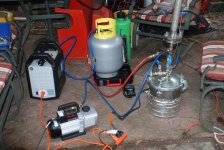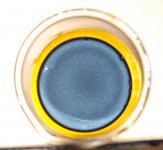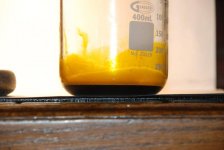cool i think what i was referring to is the refrigerant recovery system as for the oilless pump i think your vacuum pump is not oil less but the refrigerant recovery system pump is?
Correct. I just ecavuate air and moisture with the AC vacuum pump, but butane with the oil free refrigerant recovery machine.
Butane dilutes the crank case lubricant of non-oil free compressors, plus even with an oil separator, the lubricant gets mixed with the butane and meds.








